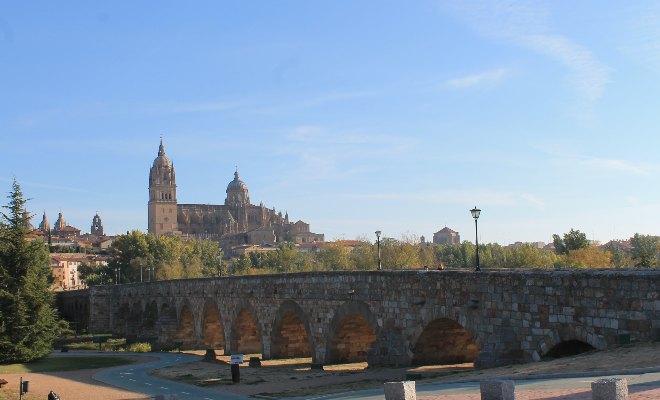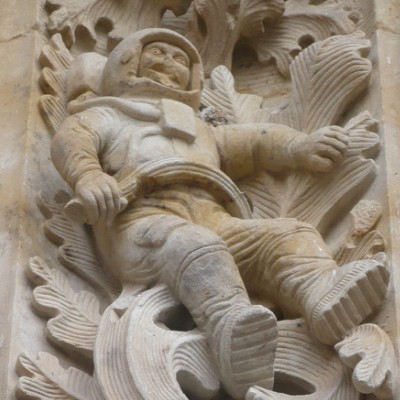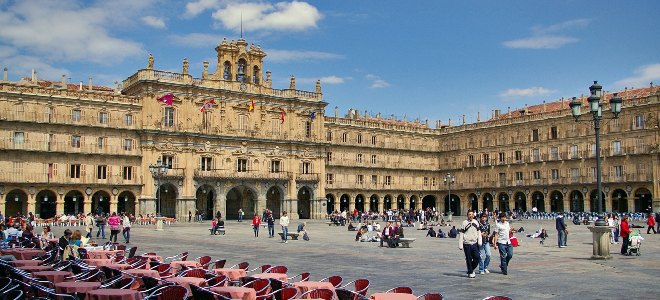Comments
mood_bad
No comments yet.
chat
Official UK partner to the Paradors, Pousadas, Pestana Hotels & Resorts, Les Collectionneurs (Chateaux), and European Hotels Collection. Keytours International, formerly Keytel International, your agent in the UK.
Celebrating its astounding 800 year anniversary in 2018, the University of Salamanca is an impressive Spanish educational institution, comparable to the likes of Oxbridge in the UK.
First founded in the ancient Cathedral of Salamanca in 1218, the university was Spain’s first institute of higher education and now has its own city centre campus with a beautiful Plateresque façade and attended by over 30,000 students. Its alumni include literary great Miguel de Cervantes, author of Don Quixote, legendary conquistador Hernán Cortes and friar and poet Luís de Léon. Christopher Columbus was also known to have graced its hallways and consulted with professors concerning his explorations. The university began offering Spanish language and culture courses in the 1920s and is now a popular destination for foreign students looking to study abroad.

In addition to its ancient and esteemed university, Salamanca has plenty to offer a variety of visitors. Known as “La Dorada” (the Golden City) due to its sandstone buildings, Salamanca is renowned as an academic and religious epicentre with a grand cathedral dominating its skyline. The city was awarded UNESCO World Heritage status in 1988 thanks to its abundance of historical monuments and buildings and was declared European Capital of Culture in 2002.
The city’s ‘cathedral’ actually comprises two cathedrals; the ‘Old Cathedral’ is a Romanesque building dating back to the 12th & 13th centuries featuring the eye-catching Gallo tower and a grand mural painting by Nicolás Florentine, and the ‘New Cathedral’ which was built between the 16th and 18th centuries. Part of the New Cathedral’s façade, which features carvings of numerous biblical figures, was rebuilt in 1992 to repair damage. Whilst the renovators did a fantastic job recreating the original masonry, there is an element of fun for visitors to try and spot nods to contemporary items such as a floating astronaut, a demon eating an ice cream and the famous frog of Salamanca.

Salamanca’s 18th century baroque ‘Plaza Mayor’ is one of the town’s biggest attractions and liveliest centres. Smaller than Madrid’s famous Plaza Mayor, the square is similar in design and is bordered by a number of restaurants, cafes and shops. Look to the top of the arches and you will spot medallions featuring images of famous Spanish figures and royalty including King Felipe V (who commissioned the building of the square), Cervantes, Cortes, the current royal family and, rather controversially, Dictator Francisco Franco (although his image is frequently the subject of vandalism). You will notice a few of the medallions are currently missing portraits; this is to make way for future royals.

Another of Salamanca’s historical must-sees is the House of Shells which is located opposite the city’s university. Designed in the late 15th century, its conspicuous façade is covered in small stone shells, a symbol of the Way of St James, and is an example of Isabelline architecture. Today the building houses Salamanca’s public library.
Don’t let Salamanca’s ancient treasures fool you into thinking this is a quiet, historical city. As a famous university centre, this lively and colourful locale is buzzing with students and tourists alike, and there are plenty of restaurants, cafes and shops in both the historic and contemporary centres of the town. The city’s contemporary cultural offerings can be found near the Roman Bridge and include the Casa Lis Art Deco Museum and the Museum of Automotive History which houses an impressive car collection. Haute-cuisine lovers should check out Victor Gutierrez, Salamanca’s only Michelin-starred restaurant.
Those looking for a pleasant walk into Salamanca from the Parador can cross the charming Roman Bridge which leads to the back of the old town and from there it is a short uphill walk to the Cathedral.
Salamanca is only two hours’ drive away from Madrid and there are a number of trains (travelling through rather pretty landscapes) leaving from Madrid’s Chamartín station which take around 3 hours and include stops at other cultural centres such as Avila. These transport options make Salamanca a great choice for those looking to do a tour of Madrid’s satellite cities by car or public transport.